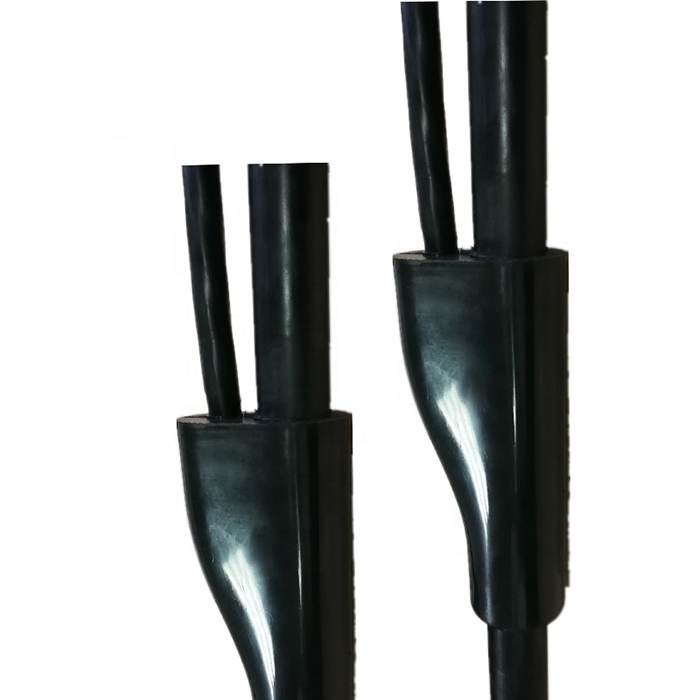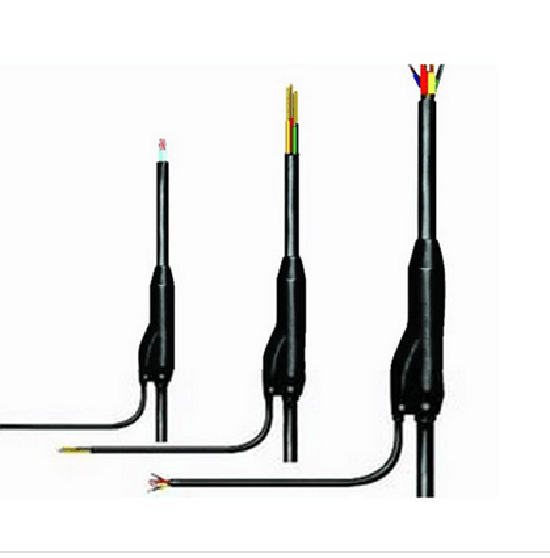With the acceptance of prefabricated branch cables by the majority of users, a variety of prefabricated branch cables have entered the market under the situation of rapid increase in usage. This situation has brought a certain degree of selection to building electrical designers. difficult. The choice of stranded type, also called twisted type, branch cable is introduced below.
1. Defects of twisted type
The so-called twisted type and twisted type are multiple single-core power cables twisted together. For the core wires of power cables, the purpose of twisting multiple copper cable or aluminum wires is to increase the cross-section of the wires. Because they are all in the same phase and the same electromagnetic angle, there will be no problems with the distribution and change of capacitance and inductance due to any difference in electromagnetic phase angle. However, the influence of heat dissipation and the decrease of current-carrying value have also appeared. Therefore, the larger the cross-section, the lower the unit current intercept value. And it is still on the special equipment, according to the specified pitch and twisting force, the whole strip is finished at one time. This kind of twisting is consistent in terms of torque, pitch and uniformity, and there will be no change in pitch or uneven elasticity. The following only takes the round conductive core as an example, and the stranding rules are as follows:
(1). The center is generally a single wire, and the second layer has six single wires. In the future, each layer will increase by six more than the original number of the inner layer. The single wire adopts the same wire diameter;
(2). The stranding direction of each layer of single wires should be opposite to the previous layer, and generally the outermost layer is twisted to the left.
Stranded and twisted prefabricated branch cables, that is, multiple single-core power cables are twisted and used as three-phase three-wire, three-phase four-wire or three-phase five-wire power supply circuits. First of all, let’s start with “stranding”. This kind of “stranding”, whether in the production plant of prefabricated branch cables or the completion of the “stranding” process at the construction and installation site, is a special “stranding” equipment that has neither specialized , There is no corresponding pitch, strength, tightness, and uniformity regulations or requirements to follow. What is even more difficult to deal with is the branch cables and branch connectors of various sizes and locations with no rules, which are enough to determine the “multi-core cable” after the “stranding”, whether it is in terms of torque, pitch, density, The tightness, uniformity, and external dimensions will all be unknown. Therefore, it is determined that this “stranded” “multi-core cable” has become the most basic parameters and indicators in terms of the distribution of inductance and capacitance, and the electromagnetic theory of electromagnetic vibration, attraction and repulsion. The chaotic “Brownian motion”.
In the actual operation after construction and installation, first, the distribution, pitch, and tightness of inductance and capacitance are chaotic, which will inevitably lead to chaos in the entire power supply circuit and some local heat dissipation and temperature rise. Even for several power cables without branches and without branch connectors, the power cables that are twisted under the conditions of strict control of their twisting strength, tightness, and pitch, are affected by heat dissipation and temperature rise. The actual allowable current carrying capacity cannot be compared with single-core power cables laid horizontally or vertically in accordance with the specifications.
and capacitance are chaotic, which will inevitably lead to chaos in the entire power supply circuit and some local heat dissipation and temperature rise. Even for several power cables without branches and without branch connectors, the power cables that are twisted under the conditions of strict control of their twisting strength, tightness, and pitch, are affected by heat dissipation and temperature rise. The actual allowable current carrying capacity cannot be compared with single-core power cables laid horizontally or vertically in accordance with the specifications.
Secondly, under the operating state of balanced or unbalanced current, when the load current, temperature, environment change or influence, the resistance between each cable and each cable itself in terms of absorption, repulsion, extension, contraction, up and down, etc. Irregularities in force and movement. This phenomenon is extremely detrimental to the stability and reliability of the entire power supply loop, and it may even cause damage to the sheath and insulation at the location where the cable is installed and tightened, which may cause an accident.
Thirdly, this kind of “twisted” power cables in a chaotic manner is really unsightly when placed in cable wells or cable channels. At the same time, it will also bring a defect in the design and construction of electrical system drawings, electrical system construction and engineering quality that fail to comply with the “horizontal, horizontal and vertical” regulations.
2. Relevant regulations in the electrical design code for civil buildings
2.1 Regulations for parallel laying of cables
When cables with the same voltage in the “Code for Electrical Design of Civil Buildings” promulgated and implemented by the Ministry of Construction in 1993, the net distance of the cable should not be less than 35 mm and should not be less than the outer diameter of the cable. It is stipulated in the article that when cables are laid side by side, a certain distance should be kept between cables to ensure the safe operation of the cables and the needs of maintenance and overhaul, so as to avoid the burning of adjacent cables when the cables fail. Reduce current carrying capacity, affect maintenance and cause mechanical damage. In addition, the distribution and influence of inductance and capacitance are also important reasons for increasing operating temperature and decreasing current carrying capacity. Obviously, “twisted type” and “twisted type” cannot meet the requirements of this article.
2.2 Regulations for cable selection
The electrical design code of civil buildings stipulates: “The power cable used in the three-phase four-wire system should be a four-core cable.” In the article description, it is stipulated in the three-phase four-wire system that an additional three-core cable is used. Conductor or single-core cable is used as the neutral line. When the three-phase system is unbalanced, it is equivalent to the operating state of single-core cable, which is easy to cause power frequency interference. For bare armored cables, it will also accelerate the corrosion of the metal sheath and armor layer, so four-core cables are required. “This article explains that although the distribution and change of inductance and capacitance are not clearly raised, it also indirectly pointed out their influence. It is not possible for a three-core power cable to be used as a neutral line, let alone four or five single cables. “Twisted” and “twisted” of core power cables? Obviously, “twisted” and “twisted” types cannot meet the requirements of this article.

2.3 Regulations for laying of power cables
The laying of power cables, whether indoor or outdoor, whether it is in the “Code for Electrical Design of Buildings”, “Code for Construction of Electrical Construction”, the “Codes” for the design and construction of various power systems, and whether it is the “Codes” of China or IEC standards, NEC “regulations”, Japanese standards, and standards of other countries all have a clear stipulation: whether it is installed vertically or horizontally, it must meet the requirements of “horizontal, horizontal and vertical” in order to ensure the acceptance of the project quality. Obviously, “twisted type” and “twisted type” can not meet the requirements of this regulation.
Throughout the development history of power cables, from the advent of single-core power cables to the present, we have fully realized in theoretical research and use practice: “twisting” and “twisting” four or five single-core power cables together , As a three-phase four-wire, three-phase five-wire system power supply circuit inside the building facilities, it is not advisable, nor feasible. my country has always followed the practice and regulations of parallel laying, which is based on its theory and practice. If in order to reduce or compress its laying and use space, just “twisting” or “twisting” can meet all requirements from theory to practice, then there is no need for multi-core power cables to come out. Throughout the domestic and international “standards”, “standards”, “regulations” and examples of outstanding well-known buildings, there are no regulations or allow four or five single-core power cables to be “twisted” or “twisted” as Precedents for the use of three-phase three-wire, three-phase four-wire, and three-phase five-wire power supply circuits. In irregular, small and sporadic construction facilities, use “twisted” or “twisted” multiple single-core power cables as three-phase three-wire, three-phase four-wire, three-phase five-wire power supply circuits exception.
In foreign power supply circuits embedded in the soil, it is allowed to use three single-core power cables twisted and embedded. Its purpose is: the twisted cable has a certain degree of flexibility, and it can play a certain buffering role when the cable is damaged or impacted by the local changes and land subsidence. But it must be twisted in strict accordance with the specified pitch and strength inside the factory, and no branches are allowed.

